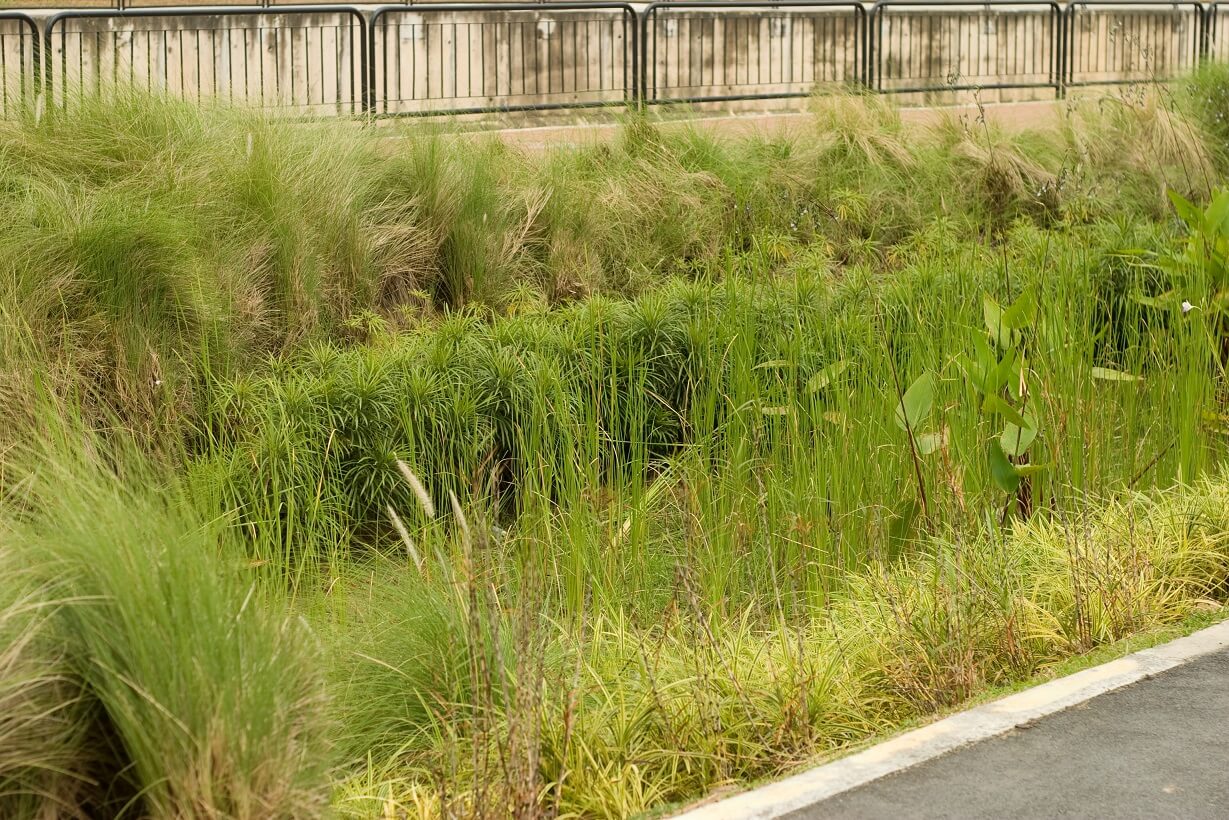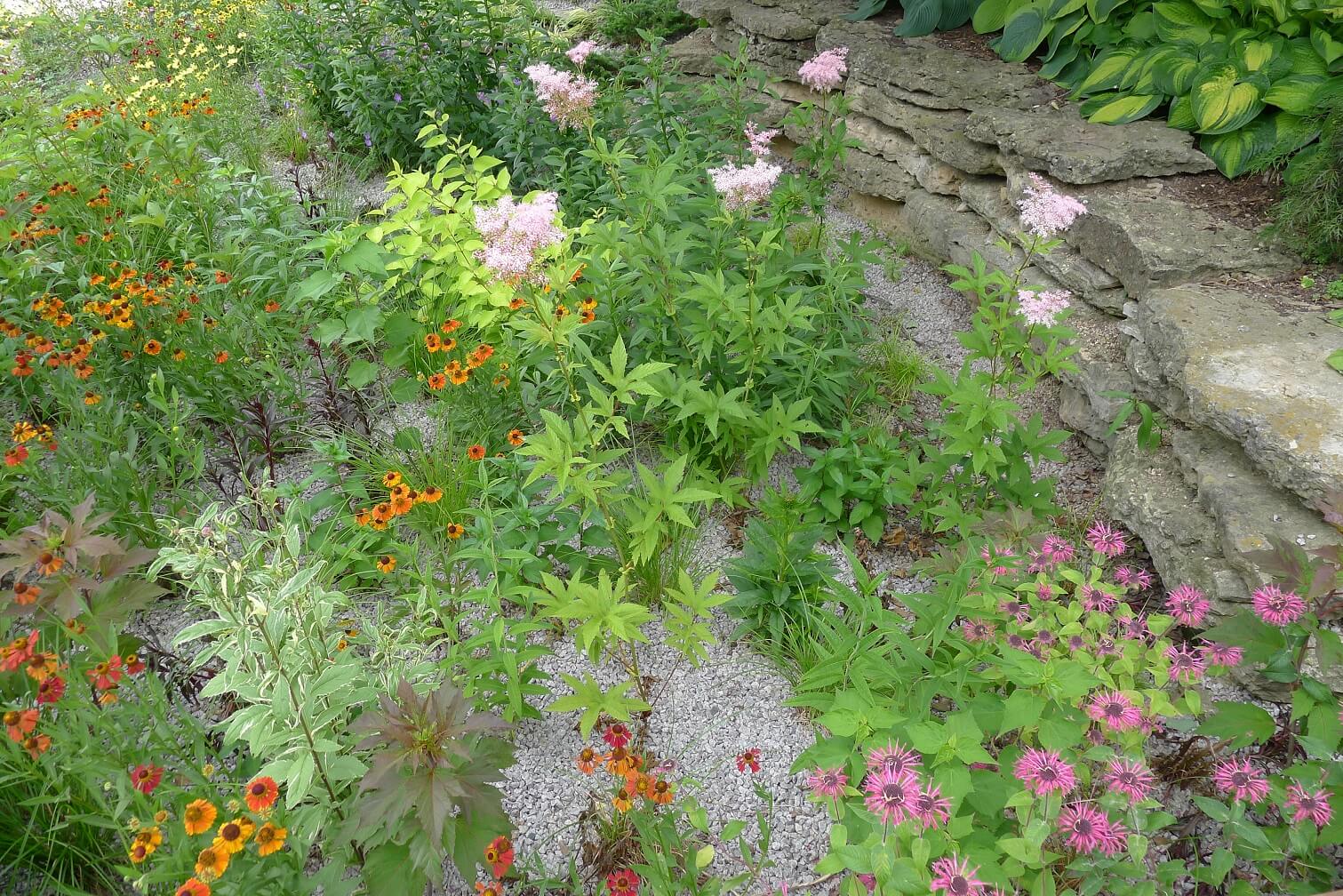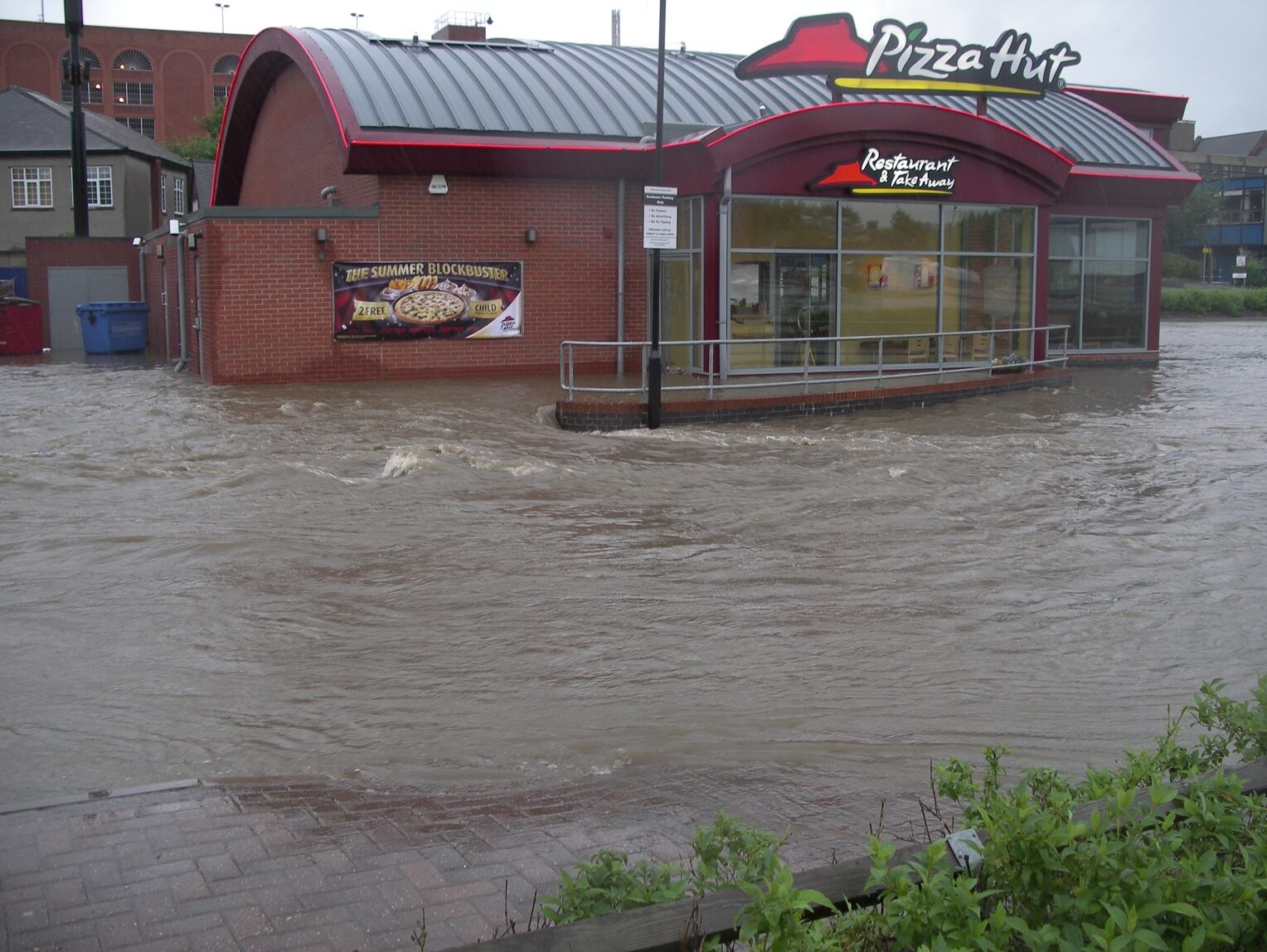
A rain garden in its simplest form stands as “a shallow depression, with absorbent yet, free draining soil and planted with vegetation that can withstand occasional temporary flooding”. Such gardens can be a very effective -a small scale community-led step towards preventing risks of flooding within homes and residential areas. A guide to rain gardens has been provided by raingardens.info for those interested in installing a rain garden within their property, together with further information on the benefits and effects of installing one. There are however much larger rain gardens being implemented in many urban and communal spaces.
The plants on the surface of the gardens act not only as an aesthetically pleasing aspect to the design, but as a natural flood defence to which water may infiltrate – slowing the rate of surface water build up on the roads. Beneath the surface of the gardens a water tank is fitted, which is backed up by an additional overflow pipe connecting it directly to the sewer or run off system.
These innovative garden designs have become ever more popular in recent years, as urbanisation continues to diminish our natural green spaces. This year’s Chelsea Flower Show also saw its first rain garden – designed by Dr Nigel Dunnett. His garden, named the ‘New Wild Garden’ is now situated in Gloucestershire. Here the idea of building a rain garden was promoted because not only could it primarily prevent flooding, but also allow wildlife to thrive as well as keeping plants hydrated without the need for watering as often – ideal for gardeners who prefer a low maintenance approach. Rain gardens can additionally be both inexpensive and sustainable, with Dunnett’s garden being built with emphasis on just this. According to The Guardian “many of the hard materials used to make the New Wild Garden were gathered from skips and charity shops. Insect habitats were made using old water pipes, bits of bark, drilled wood and the cross section of an ivy stem taken off a house. Dry-stone walls feature old books and toy cars, while the granite used to make the path was salvaged from outside the Natural History Museum”. Dunnett has even produced a book with Andy Clayden about rain gardens and their sustainability.
As highlighted by Dunnett’s rain garden, alongside many others, the concept itself invites innovation and creativity while remaining entirely flexible in fitting to its surrounding environment. Simple provisions still need to be considered however, such as ensuring the garden isn’t situated on too steep a slope or close to building foundations– as these factors can lessen the garden’s permeability.

Further note can be taken from the U.S. Environmental Protection Agency, who have put together a webpage on which plants are native to, and thrive most, in each American state. This allows for gardeners to adapt to their local environments in ensuring that the plants they stock their gardens with conserve water at a level in sympathy with the shortages in the area. For instance the use of drought tolerant crops are encouraged in various states such as Arizona. When putting together a rain garden in the UK, it is important to stock it with plants native to the area, which can tolerate as much surface water as possible in order to resist flooding rather than drought. The Royal Horticultural Society have similarly put together a webpage on trees and shrubs that are native to the UK, which can be useful in considering the practical design for a rain garden.
Kent County Council will soon be implementing the very first series of seventeen ‘rain gardens’ in Folkestone, in order to combat flooding. Flooding in this area has proved hazardous in the past, where both roads, houses and businesses are vulnerable.
According to Kent County Council “this inventive initiative will increase the amount of water captured on Dolphins Road and provide storage below the rain gardens that then control the rate that water flows into the sewer. The tank lets the water out into the sewer at a much slower rate than conventional highway gullies and so won’t overwhelm the network.”

Southern Water has also become involved in the initiative, partnering with Kent County Council on researching further options to reduce flooding risks across the area, possibly through the installation of additional water storage facilities. However, while the implementation of these particular gardens remains more complex and high-tech, the concept of rain gardens isn’t entirely new and a return to more traditional flood control methods is becoming more common.
Flooding is becoming more and more of an issue in many parts of the UK and the world. British companies like UNDA provide an ever increasing number of flood risk assessments across the country as the need to know about the potential of flooding grows. The government and councils are rightly putting pressure on developers to make sure houses are being built in areas that are not likely to flood or are capable of dealing with flood water. Rain gardens are just one of many measures both the government and individuals should be thinking about. Not only do they look wonderful but hey provide a service to homes and those around them. Larger rain gardens like those planned for Folkestone should be employed in a number of areas to help protect surrounding properties.

Of course, the reasons there is even a need for flood protection are many but most agree it is related to climate change. So as well and looking at mitigation devices like rain gardens it is important everyone continues to try to reduce their carbon footprint to stop things getting any worse over the coming decades.
–
Ade Holder was once primarily a motoring writer but with a background in Zoology and Environmental Science as well as a deep passion for all things living and growing he found himself writing on a much broader range of topics. As well as writing on various topics Ade has also been called to speak on BBC radio on a number of topics. In his spare time he can often be found covered in mud on a mountain bike somewhere on the South Downs.